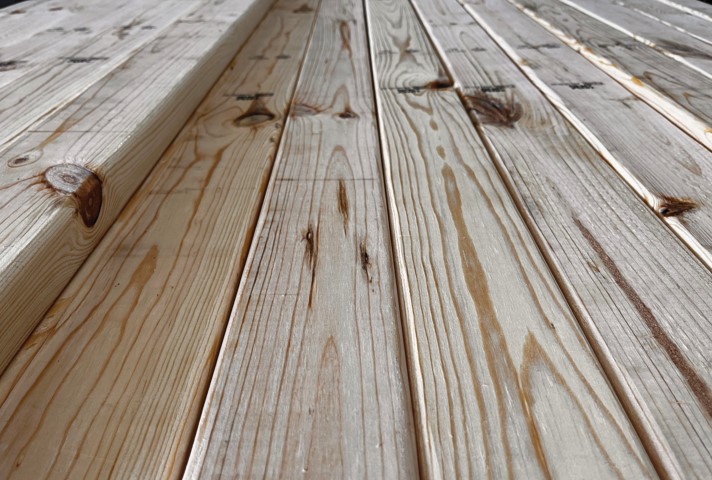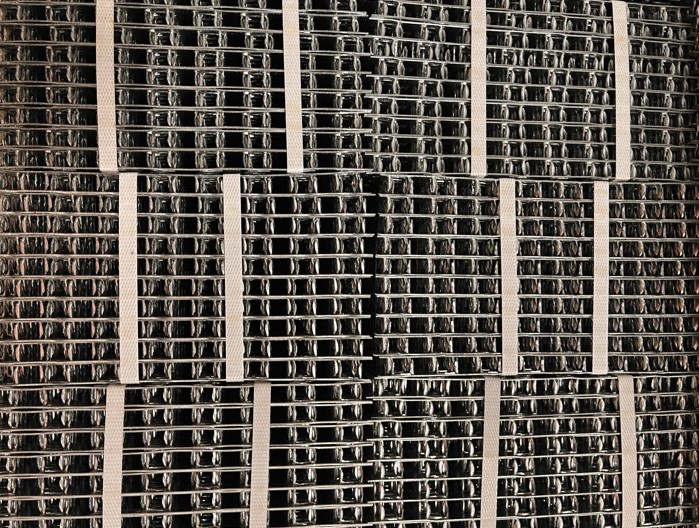The Virtues of Consistency and Reliability
Imagine what running a truss plant would be like if one out of every hundred connector plates had performance issues in the field or every third stick of lumber was 1/16” thicker or thinner than the next, making joints difficult to assemble. Not only would there be constant headaches and stress associated with poor product performance, but your exposure to risk would be so great it might make component manufacturing unviable. To address this issue, this article explores the importance of industry standards and how component manufacturers (CMs) rely on those standards in the design and manufacture of their products.

American Softwood Lumber Standard PS 20 and the ALS system
The American Lumber Standard Committee (ALSC) develops and maintains the American Softwood Lumber Standard, also known as PS 20, through a relatively complex process. It also operates two autonomous committees charged with implementing various aspects of the standard: the ALSC Board of Review (BOR) and National Grading Rule Committee (NGRC).
The PS 20 standard is developed in accordance with the Procedures for the Development of Voluntary Product Standards issued by the U.S. Department of Commerce. As such, it is developed through an industry-related consensus process with the intention of protecting the public interest. PS 20 establishes standard lumber sizes (including dimension lumber in green and dry conditions), requirements for the preparation of grading rules and the assignment of design values that correspond to the grade rules, industry nomenclature, formal inspection and re-inspection provisions, and grade marking requirements.
The BOR certifies grading rules and approves design values developed in accordance with ASTM standards and other criteria authorized by the National Institute of Standards and Technology. ASTM standards are published by ASTM International, formerly known as the American Society for Testing and Materials, an organization that develops and maintains voluntary standards for a variety of materials and applications. The BOR also solicits the advice and counsel of the U.S. Forest Products Laboratory, and accredits and monitors agencies to grade and inspect according to those rules. The NGRC maintains descriptions of grades of dimension lumber conforming to the PS 20 standard for public reference. The American Lumber Standard (ALS) system is the result of this process.
The ALS system creates a structure for the lumber industry and consumers where the goal is to establish a common understanding and acceptance of important lumber characteristics. Any person or entity that wishes to manufacture dimension lumber for commerce will therefore need to adhere to the requirements of PS 20 and the ALS system in order to ensure market legitimacy and acceptance. Those requirements guarantee that the size, length, moisture content, grading, etc. all conform to established criteria so that the lumber purchaser can expect a product from any one mill to look like and perform to those minimum guidelines.
The uniformity created by the ALS system, which dates back over 100 years ago, resolved issues caused by non-standard practices open to misunderstanding or worse, and is intended to develop and maintain trust in the U.S. lumber industry. Indeed, the component manufacturing industry absolutely relies on the PS 20 standard and the ALS system because they establish reliable characteristics, including strength properties, associated with structural lumber sold in North America. Those design values are an integral part of the software CMs used in the design of individual structural components, whether they are roof trusses, floor trusses, or wall panels.
National Design Standard for Metal Plate Connected Wood Truss Construction, ANSI/TPI 1
Since metal plate connected (MPC) wood trusses are manufactured with wood and steel, lumber is only half the equation when it comes to a component manufacturer’s (CM) materials. The ANSI/TPI 1 standard includes provisions associated with quality of the constituent materials and the fabrication of MPCs for wood trusses.
 Just like dimension lumber, steel used to manufacture metal connector plates for wood trusses must adhere to strict standards. ANSI/TPI 1 Chapter 4 (Metal Connector Plate Manufacturing) requires steel to comply with relevant ASTM standards.
Just like dimension lumber, steel used to manufacture metal connector plates for wood trusses must adhere to strict standards. ANSI/TPI 1 Chapter 4 (Metal Connector Plate Manufacturing) requires steel to comply with relevant ASTM standards.
Per the ANSI/TPI 1 standard, the steel used to manufacture MPCs for wood trusses must meet or exceed the strength properties of ASTM A653 Grade 33 steel. The typical galvanized coating must meet or exceed a coating level of G60 (0.60 oz/square foot), or alternate criteria for alternatives to hot-dip galvanizing. The ASTM A653 standard also specifies the chemical makeup of the steel and establishes several other minimum requirements. The steel that plate manufacturers use can exceed those properties, but the yield and ultimate tensile strengths and the galvanized coating thickness must be greater than or equal to those specified in ASTM A653 for Grade 33 and a G60 galvanizing level. To that end, the ANSI/TPI 1 standard requires that each coil of steel must have a certified report with respect to its grade, mechanical properties, and chemical properties.
As an added step in quality assurance for the CM consumer, all TPI plate manufacturing members participate in a voluntary steel verification program operated by TPI (see tpinst.org/steel-verification). The purpose of this program is to ensure that all of the steel purchased in manufacturing MPCs for use in engineered wood trusses is certified by the producing mill as required by the ANSI/TPI 1 standard. Plate suppliers in the program are required to audit their purchasing records on a quarterly basis and report their findings to TPI. This is just one added monitoring measure to ensure that the CM consumer is getting what is required by ANSI/TPI 1. Similarly, all TPI plate manufacturing members have obtained formal evaluation reports identifying the compliance of their proprietary truss plates with ANSI/TPI 1 in order to aid in acceptance by local building code jurisdictions.
 Further, the ANSI/TPI 1 standard also mandates a third-party qualified formal Quality Assurance (QA) program for the manufacture of MPCs. This program addresses measurements and observations required during the production process of multiple trusses, as well as periodic inspections of MPCs from each production line on a periodic basis to assure compliance with required tolerances. Again, all of these requirements are put in place by the ANSI/TPI 1 standard to ensure a consistent and reliable product that CMs can rely on.
Further, the ANSI/TPI 1 standard also mandates a third-party qualified formal Quality Assurance (QA) program for the manufacture of MPCs. This program addresses measurements and observations required during the production process of multiple trusses, as well as periodic inspections of MPCs from each production line on a periodic basis to assure compliance with required tolerances. Again, all of these requirements are put in place by the ANSI/TPI 1 standard to ensure a consistent and reliable product that CMs can rely on.
CM Responsibilities
Just as the ALS system helps to ensure the structural quality of lumber, and ANSI/TPI 1 Chapter 4 helps to guarantee the structural quality of MPCs, ANSI/TPI 1 Chapter 3 (Quality Criteria for the Manufacture of MPC Wood Trusses) requires an in-plant QA program for each component manufacturing plant. The specific requirements of Chapter 3, and its implications for CMs, will be covered in a future article.
This article is the result of a collaboration between the members of the Truss Plate Institute’s Technical Advisory Committee (TPITAC) and SBCA. It is part of a technical article series driven by TPITAC members that seeks to address pertinent engineering topics and provide design best practices.
